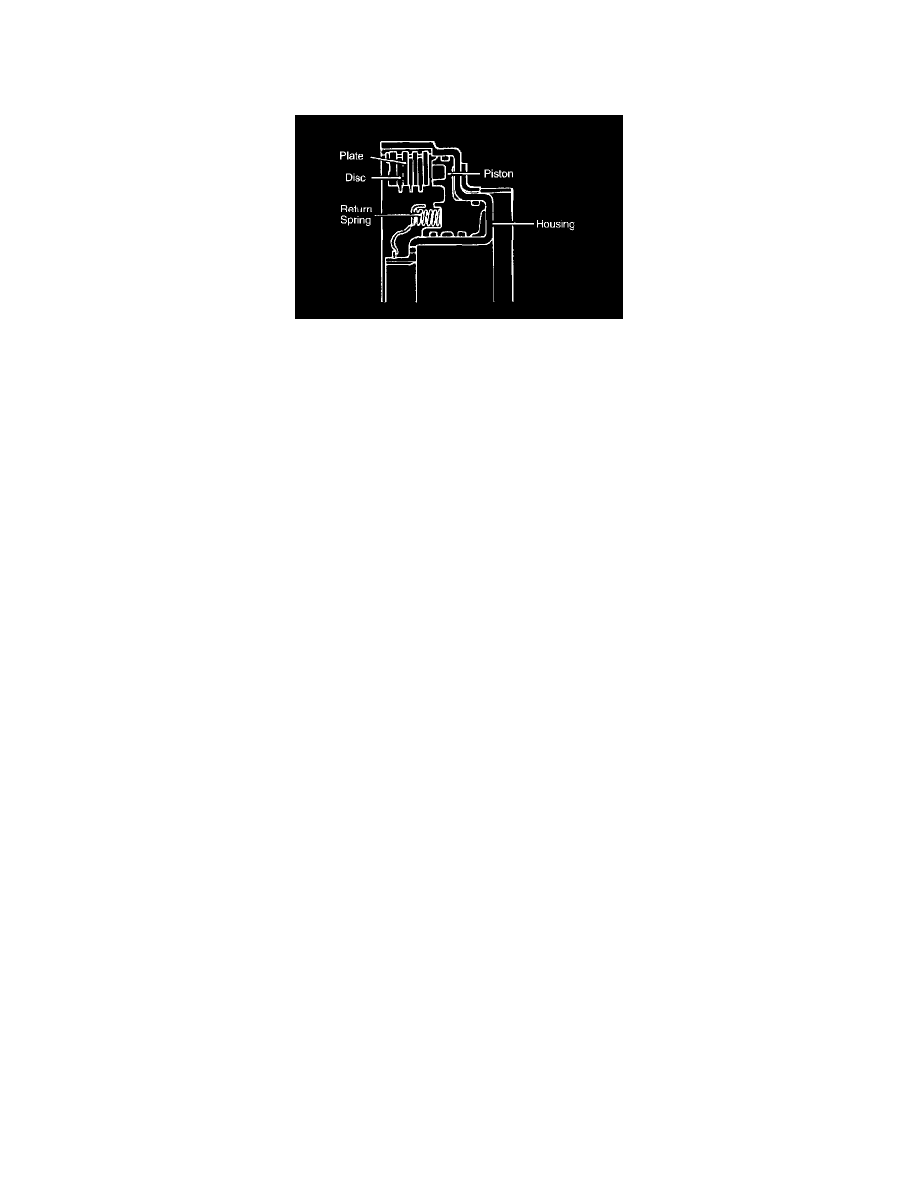Sportage 4WD 2Dr L4-2.0L (2002)

Clutch: Description and Operation
Direct Clutch
Direct Clutch
The direct clutch is applied in 3rd, 4th and reverse gears.
Pressure is applied to the direct clutch through the center support housing and center support seal rings. The piston is located in the bottom of the
direct clutch housing and held in position by return springs, a retainer and a snap ring. Fluid entering the underside of the forward clutch piston is
retained by four neoprene (rubber) C)-rings inside and outside of the piston. A single snap ring secures the plates and discs within the clutch housing.
Applying pressurized fluid to the piston forces it to move against the return springs and compresses the discs and plates to engage the clutch. The coil
(return) springs provide no mechanical advantage. The direct clutch discs are splined to the direct clutch hub. The plates are splined to the direct
clutch housing. The direct clutch housing is splined to the sun gear.
A specific clearance is required between the discs and plates to allow them to slip when not engaged. Excessive clearance indicates plate and/or disc
wear. Insufficient clearance indicates improper assembly or overhaul procedures.
In operation, the discs engage the plates, causing the direct clutch hub to drive the front and rear planetary sun gear. The direct clutch hub rotates with
the forward clutch housing at all times. When the forward clutch and the direct clutch are applied at the same time, direct drive results. If only the
direct clutch is applied, the forward clutch housing rotates but does not drive the intermediate shaft. A check ball in the piston traps pressure when the
piston is applied and allows residual pressure to escape after the piston is released.
